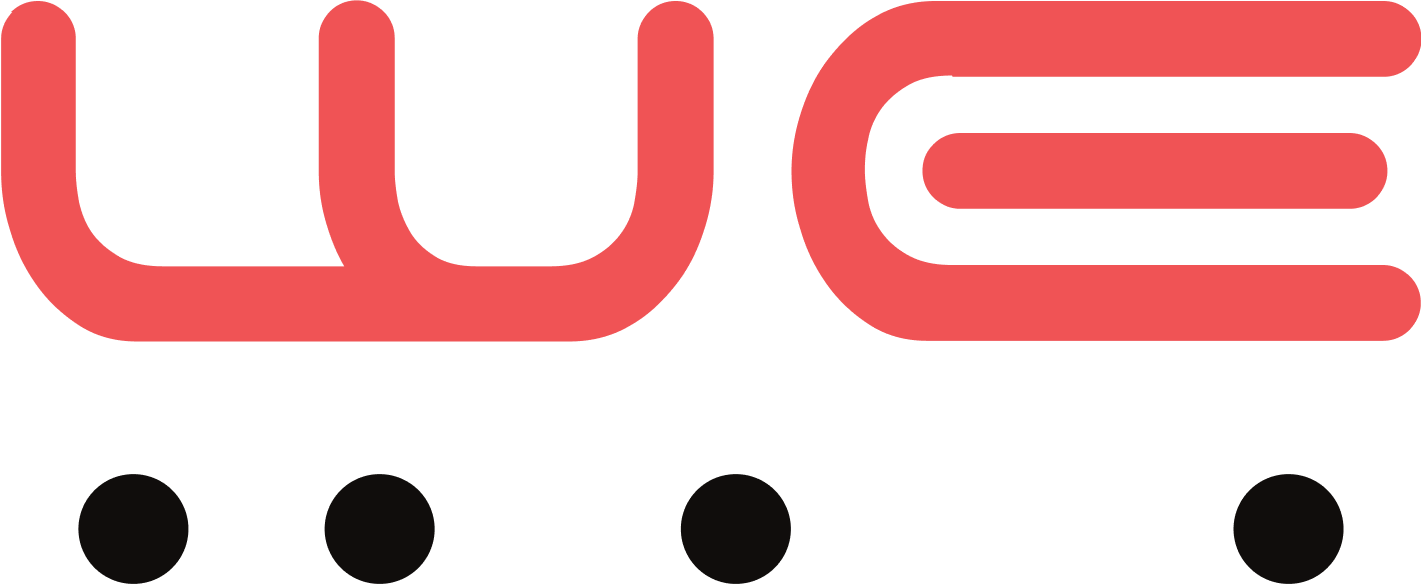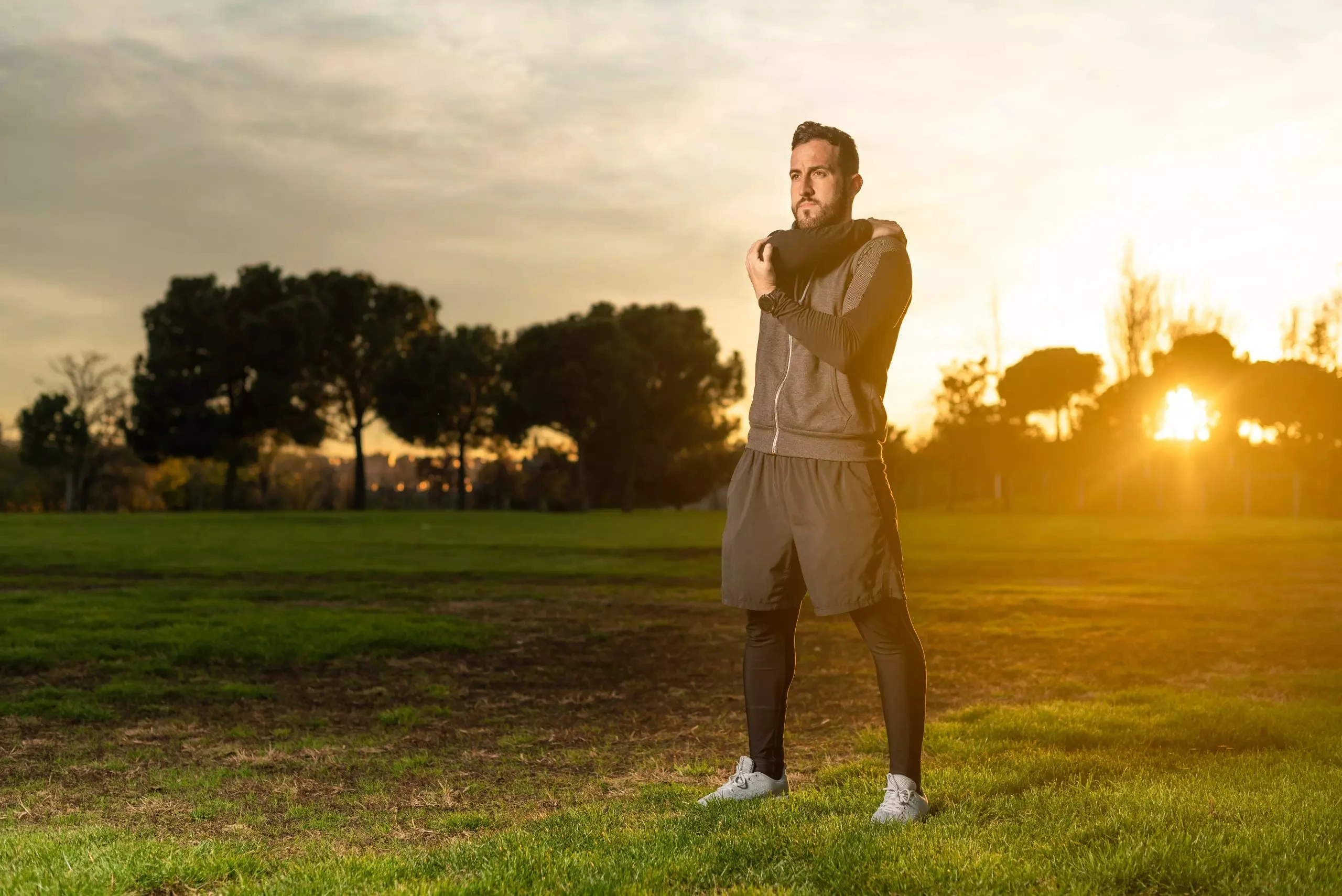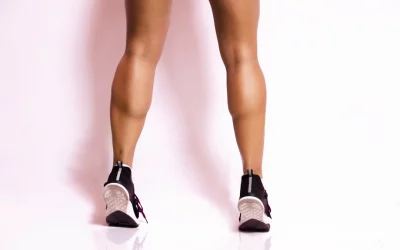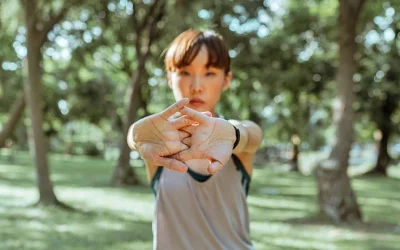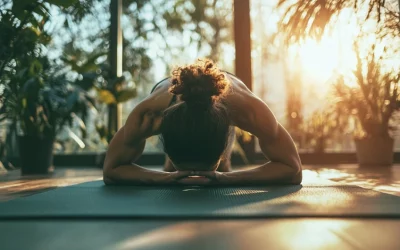As an athlete, your body is constantly pushed to its limits, and stretching often takes a back seat to training and competition. But the truth is, stretching is your secret weapon—not just for boosting flexibility, but for enhancing performance and preventing injuries that could sideline your progress. The right stretches can help you stay agile, powerful, and resilient.
However, not all stretches are created equal. Athletes need targeted exercises that cater to their unique physical demands and support their long-term goals.
In this guide, we’ll walk you through a comprehensive full-body stretching routine designed to keep you performing at your best. Say goodbye to muscle soreness and hello to improved mobility, strength, and endurance—because when your body moves better, you perform better!
Why is Full Body Stretching Important for Athletes?
Full-body stretching plays an important role in maintaining athletic performance and preventing injuries. When you stretch, you improve joint mobility and muscle elasticity, which reduces the risk of strains, sprains, and other common injuries.
Flexibility is another key component that stretching improves. Better flexibility allows you to maintain proper form during movements, which helps reduce muscle tightness and supports a full range of motion. This is important for both preventing injury and making sure that your body moves as efficiently as possible during athletic activities.
Increased flexibility and mobility also translate into improved performance. With a more flexible body, you’re able to move more freely, which can lead to quicker reactions, better balance, and greater overall efficiency in your movements, which can give you a competitive edge and help you perform at your best.
 Dynamic Stretches to Warm Up the Muscles
Dynamic Stretches to Warm Up the Muscles
Arm Swings
Arm swings help loosen your upper body and increase your shoulder’s range of motion. They can be done in several variations to target different areas of mobility and flexibility, making them a great addition to any warm-up routine.
Forward arm swings involve swinging your arms in large circles in front of your body. As you do this, you engage your shoulders and upper arms, promoting blood flow and loosening the muscles in your upper body. This helps prepare your shoulders for a wide range of motion, especially in activities involving throwing, swimming, or overhead motions.
Backward arm swings are similar but involve reversing the direction of the movement. By swinging your arms backward, you help improve mobility in the shoulder joints. This variation is particularly useful for athletes whose sports involve pulling or backward motions, such as rowing or certain gymnastic exercises.
Another variation you can incorporate is cross-body arm swings. With these, you swing each arm across the front of your chest. This dynamic movement not only helps loosen the shoulders but also improves your rotational flexibility and range of motion in the upper body, which is critical in sports that require twisting or rotational movements, like tennis or baseball.
Standing Side Bends
Standing side bends are an effective way to engage the lateral muscles of your torso, especially the obliques. These muscles play a key role in stabilizing your core and improving overall balance. This stretch is beneficial for athletes who rely on rotational movements or require lateral flexibility in their sports.
To perform the stretch, you stand upright with your feet shoulder-width apart and extend one arm overhead, reaching toward the opposite side. This arm extension deepens the stretch, allowing you to target the sides of your body more effectively. As you stretch, you’ll feel the pull along your side, which helps improve flexibility and mobility in the torso.
For an added challenge and to engage the core more fully, you can incorporate a slight torso rotation while bending. This additional movement further stretches the sides of your body and activates deeper core muscles, improving the benefits of the stretch.
Walking Lunges with Torso Rotation
Walking lunges with torso rotation activate key muscle groups in both your lower body and core. This movement starts with a basic walking lunge, a forward step where you bend both knees, lowering your body toward the ground as the back knee approaches the floor. During this motion, the quads, hamstrings, and glutes are all engaged, helping to prepare your legs for athletic activity.
The added twist, or torso rotation, takes this movement a step further. As you lower into the lunge, rotate your torso toward the side of the front leg. This rotation improves core engagement, specifically targeting your obliques and deep core muscles. Rotational mobility is important for athletic performance, especially in sports that require speedy changes in direction or twisting motions.
Frankensteins
The Frankenstein stretch is a dynamic movement designed to engage your hamstrings and promote flexibility throughout your legs. To perform this stretch, you stand tall and kick one straight leg forward, aiming to touch your opposite hand as you maintain balance. As its name suggests, the motion should resemble that of Frankenstein’s Monster.
Alternate between legs with each kick, keeping your movements controlled and steady. This motion actively lengthens the hamstrings with each repetition, helping to warm up the muscles while improving leg flexibility.
High Knees
High knees are a great addition to any warm-up routine because they quickly raise your heart rate and get your body ready for activity. This exercise mimics a running motion, but with exaggerated knee lifts, which increases cardiovascular activity and gets the blood flowing.
The movement also engages your hip flexors, an important muscle group for athletes. By driving your knees up toward your chest, you activate these muscles and improve lower body mobility. This increased mobility is important for a range of athletic movements, from sprinting to jumping.
There are also variations that can increase the effectiveness of high knees:
- High knees with arm drive: Incorporating strong arm movements helps engage both the upper and lower body, improving coordination and adding an extra layer of intensity.
- High knees with high skips: Adding a skipping motion while lifting your knees can further challenge your balance and activate even more muscle groups.
Static Stretches for Improved Flexibility
Low Lunge Hip Flexor Stretch
The Low Lunge Hip Flexor Stretch is an essential part of post-training recovery, especially for athletes who often experience tightness in the hip flexors. This stretch mainly targets the front of the hip, an area that tends to tighten up after activities like running, jumping, or any sport that involves repeated hip flexion.
To perform the stretch, start in a low lunge position. Place one foot forward with the knee bent at a 90-degree angle, while the opposite leg extends straight back, keeping the knee on the ground. The key is to make sure that your hips are pressed gently forward, which creates a deep stretch in the hip flexors of the extended leg.
For an amplified stretch and added core engagement, you can incorporate a torso twist. Simply rotate your upper body towards the side of the front leg, which also helps improve mobility in the spine and core.
Seated Forward Bend (Paschimottanasana)
The seated forward bend, also known as Paschimottanasana in yoga, is a powerful stretch to help release tension in both the hamstrings and lower back.
The traditional version of this stretch involves sitting with your legs straight out in front of you. As you reach forward, try to keep your spine long instead of rounding the back. This helps to protect both your back and hamstrings from unnecessary strain. As you fold forward, you might feel a deep stretch along the entire backside of your body, especially in the hamstrings and lower back.
For a variation, you can try the wide-leg forward bend. In this version, you spread your legs apart into a “V” shape before reaching forward. This targets slightly different muscles, focusing more on the inner thighs and lower back, while still engaging the hamstrings.
It’s important to maintain a relaxed posture during the stretch. Avoid forcing yourself too deep into the position as this can lead to strain. Letting gravity guide your forward fold allows for a more effective, gentle release, which is key to maximizing the recovery benefits.
Pigeon Pose
Pigeon Pose targets the hips, glutes, and lower back, all areas commonly tight for athletes. This pose boosts flexibility and mobility by opening the hips and stretching the gluteal muscles.
To perform Pigeon Pose, start in a downward-facing dog position, then bring your right knee forward toward your right hand and place it on the floor with your shin at an angle. Extend your left leg straight back, keeping the top of your foot flat on the ground, and square your hips forward. Gently lower your torso over your bent leg, resting your forehead on the mat and holding for up to 30-60 seconds.
For a gentler variation, try the Reclined Pigeon Pose by lying on your back, crossing your right ankle over your left knee, and gently pulling your left leg toward your chest. Repeat on the other side for both variations.
In addition to its benefits for the hips and glutes, the pigeon pose helps relieve tension in the lower back. This makes it especially useful for athletes, as lower back tightness is common after intense physical activity.
Butterfly Stretch
The butterfly stretch is an effective way to increase flexibility in your inner thighs and hips. By sitting with your feet together and letting your knees fall outward, this stretch directly targets the groin area, helping to improve mobility in the hips and thighs.
To perform the butterfly stretch, start by sitting on the floor with your back straight and your feet together, allowing your knees to fall outward to the sides. Hold your feet with your hands and keep your spine long to maintain good posture, focusing on opening up your hips and inner thighs.
For a deeper stretch, gently lean your torso forward toward your feet, keeping your back as flat as possible. This intensifies the stretch in the inner thighs and can also help release tension in your lower back. Remember to only go as far as your flexibility allows to avoid overstretching.
Standing Quadriceps Stretch
The standing quadriceps stretch is an excellent way to target the front of your thighs, specifically the quadriceps. These muscles are important during athletic movements such as running, jumping, and squatting.
To perform this stretch, you have two main variations:
- Pull your ankle toward your glute while standing upright. This version focuses on lengthening the quadriceps and hip flexors.
- Lie on your side and pull your top ankle toward your glute, keeping your knees aligned. This version provides a more stable position and can help you focus on a deeper stretch without worrying about balance.
Cross-Body Shoulder Stretch
The cross-body shoulder stretch provides a simple way to relieve tension in your shoulders and upper back. To perform this stretch, start by bringing one arm across your chest at shoulder height. Use your opposite arm to gently pull the extended arm closer to your body, increasing the stretch in the shoulder.
You can choose to do this stretch with either a straight or bent arm. A straight-arm variation tends to target the shoulder muscle more directly, while a bent-arm version might feel more comfortable and can engage the upper back slightly differently. Both variations are beneficial, so it’s useful to experiment and see which works best for you.
This stretch is particularly helpful for athletes as it targets muscles that are frequently overworked. Whether you’ve been lifting weights, playing sports, or engaging in repetitive shoulder movements, this stretch can help reduce tightness and improve your range of motion.
Seated Spinal Twist
The seated spinal twist is an effective stretch to improve your spinal flexibility and release tension in your lower back.
To perform it, sit on the floor with your legs stretched out in front of you. Bend one knee and place the foot flat on the ground, crossing it over the opposite leg. Then, bring the opposite hand to the outside of the bent knee and gently twist your torso to deepen the stretch. For example, if your right leg is bent, use your left hand to press against the outside of your right knee, helping you turn your torso to the right.
This twist targets the muscles along your spine, which can become constricted following rigorous training. By rotating your torso, you engage and stretch your spinal muscles, improving overall flexibility.
For a more intense stretch, you can place both hands on the outside of your bent knee and use them to twist your torso further. This variation allows for a deeper engagement of the spinal muscles and can provide additional relief for a stiff or sore lower back.
Exercise Smarter with WeStretch: Your All-in-One Stretching Assistant
A consistent full-body stretching routine is essential for improving flexibility, supporting injury prevention, and enhancing overall well-being. Carefully following simple yet effective stretches targeting the hamstrings, hip flexors, back, quads, chest, and shoulders, individuals of any fitness level can reap the benefits.
Regular stretching, with attention to proper form and consistency, can help you move more freely, recover faster, and feel better in everyday activities.
Looking for a way to add some fun to your stretching routine? Check out WeStretch—an app that’s like your own personal stretch coach! With tailored plans, easy-to-follow demos, and progress tracking, it’s got everything you need to keep you limber and on point. Ready to get flexible? Sign up today and let’s get stretching!
FAQ
What is a full body dynamic stretch?
A full-body dynamic stretch involves active movements that take your muscles and joints through a full range of motion, preparing your body for physical activity.
Unlike static stretching, dynamic stretches are performed in motion, promoting blood flow, improving flexibility, and reducing the risk of injury.
For athletes, these stretches are especially beneficial as they mimic sports-specific movements, improving performance and warming up the muscles effectively.
What is the best full body stretch?
The best full body stretch for athletes combines dynamic and static movements to target all major muscle groups.
Start with a dynamic warm-up like leg swings and arm circles to increase blood flow. Follow with static stretches such as the standing hamstring stretch, quadriceps stretch, and chest opener. Incorporating the downward dog, hip flexor stretch, and spinal twist will make sure that a comprehensive routine, improving flexibility and reducing injury risk. For optimal results, hold each stretch for up to 30 seconds and focus on deep breathing.
What happens when you do a full body stretch?
A full body stretch boosts blood circulation, improves flexibility, and increases the range of motion, helping muscles relax and recover. It can reduce stiffness, prevent injury, and improve athletic performance by promoting better posture and alignment. Regular stretching also alleviates muscle tension and can aid in faster recovery post-exercise.
How many times a week should you do dynamic stretching?
Dynamic stretching can be done 3-5 times per week, ideally before workouts or athletic activities. It helps improve flexibility, increase blood flow, and prepare muscles for performance, reducing the risk of injury.
Incorporating dynamic stretches into your routine consistently will improve mobility and provide long-term benefits for athletic performance.
Why is stretching important for athletes?
Stretching is important for athletes as it improves flexibility, improves range of motion, and reduces the risk of injury. It helps muscles recover faster, boosts circulation, and can improve overall performance.
Incorporating dynamic stretches before workouts and static stretches afterward can prepare the body for intense physical activity while aiding in muscle relaxation and recovery.
